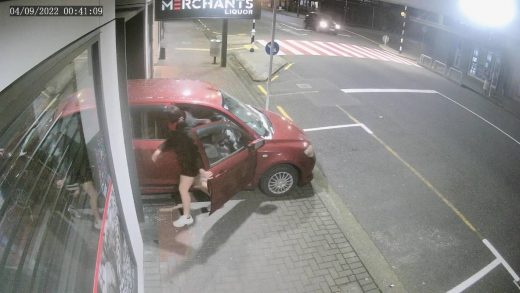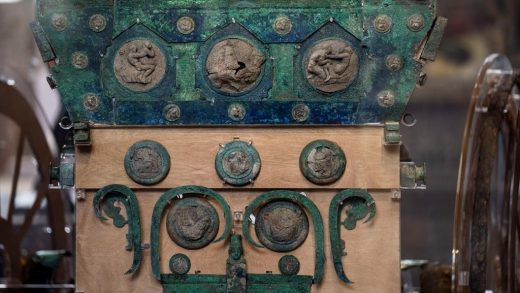
When three weasels broke into Lake Rotopiko in late 2019, circumventing the pest-proof fence possibly through a gate left ajar, they made merry.
There were mallards to dispatch, and quail as a further food source. The going was so good that they were uninterested in food lures left out for them, and continued on their predatory ways for about three months.
But they were on borrowed time. The ingenious solution was to introduce the scent of a larger predator, an animal they feared.
The super lure works in the same way unexplained noises from the basement draw the human owner hesitantly into the depths to check out the threat, says National Wetland Trust executive officer Karen Denyer.
READ MORE:
* ‘The skin of the taniwha’
* Ancient seeds a victory for the farmers bringing peat lakes back from the brink
* National Wetland Trust opens walkway and pontoon at Lake Rotopiko open wetland to public
Tom Lee/Stuff
National Wetland Trust chairperson Don Scarlet sees a “mega trend” towards understanding the value of nature for humans.
Only the weasels didn’t have a torch and couldn’t flick on the lights. Instead, drawn to investigate, they fell for the trap and were dispatched.
By such battles, wetlands are saved. This one, 20 minutes’ south of Hamilton near Ōhaupō, matters partly because it is the site of a planned national wetlands centre.
“We’ve coined it Te Papa for wetlands, a national centre that showcases Aotearoa New Zealand’s wetlands,” says National Wetland Trust chairperson Don Scarlet.
The timing may be right, with Scarlet describing a “mega trend” towards a recognition of nature’s value for humans.
Already there are walkways, signage, a toilet, and parking at the peat lake beside SH3. A discovery trail includes hands-on activities for kids including mudfish scrabble, and eels and ladders.
Tom Lee/Stuff
A pontoon allows visitors out onto the water.
A pontoon opened in late 2020 gets visitors out onto the water, and there are further plans. Denyer says they have just got funding from the Tourism Infrastructure Fund, with which they will look to convert a shipping container on site into a volunteer space and classroom.
There is a vision to reintroduce the pāteke, or brown teal, once common in Waikato but now mostly confined to Great Barrier Island, potentially with Rotopiko as the catalyst to supply other lakes.
It’s been a concerted haul, starting around 2012 with the building of the fence. Rotopiko has the benefit of strong support from Waipā District Council, and is close to a large pool of volunteers, Denyer says.
Tom Lee/Stuff
Ken Holroyd volunteers at Rotopiko where he says they’re winning the battle against weeds.
One of those is Ken Holroyd, from WFF. That stands for weed-free Fridays, with the group working in the enclosure most Friday mornings.
Holroyd, who lives in Te Awamutu, started as a volunteer six or seven years ago when he retired. He can see the fruits of his work. “It’s marvellous how quickly they [the trees] grow.” Initially, they need nurturing so they aren’t smothered by grass and weeds, which include the likes of bindweed (“a bad one”), blackberry and ivy.
But the volunteers are winning that battle.
“We just love being here, really, doing a good job,” he says. “And it’s a lovely place to come to.”
He’s not alone in thinking that: the volunteers often see people walking through the area, he says.
Scarlet says the trust’s purpose is to get Kiwis into wetlands. That’s partly about experiencing all the “wonders” of the different types of wetlands. “And also to get Kiwis to understand the value that wetlands contribute to our environment, and our community and our society.”
The timing may be good. “There is a mega trend across New Zealand and the world that recognises the environment is a lot more important to us as a human species than was the case 50 years ago. I’m not going to say that we’re there yet. But I think there’s a move.”
Tom Lee/Stuff
Kahikatea stand tall inside the enclosure.
But in the short term, Rotopiko faces what Scarlet describes as a “wicked” problem. It’s not predators but birds, including sparrows and starlings, that have conservationists scratching their heads.
In a classic case of unintended consequences, up to half a million exotic birds arrive at Rotopiko each night to roost in the pest-free haven, and nothing seems to deter them. Fog misters with a harmless irritant have proved useless. So have laser beams. Three nights of noise cannons deterred them for about a week before they returned. The problem is so big, it was the subject of a two-day forum last month.
The trust has even looked into introducing rats as a novel solution. The theory goes that only male rats would be introduced, they would be radio-tagged, and would eventually shimmy out over the fence in search of females, having done their work.
That one may or may not find approval; Denyer, who was representing New Zealand in Manila on the world wetlands stage at the time the forum was being held, is yet to see the forum’s report and consider future actions.
Tom Lee/Stuff
Murray Davies used to cut down trees for a living and now does maintenance work at Rotopiko and other lakes in the area.
Murray Davies, who does contract work at the lake and others in the area, says thinning out some densely planted areas, possibly including kahikatea, may help, exposing the birds more to the elements. And then he raises a fascinating thought. Should New Zealand succeed in becoming predator-free by 2050, what unintended consequences might there be?
Davies embodies the mega trend Scarlet speaks of. “I’m ex-Land and Surveys State Forest, so I cut down 200-year-old trees for a living once,” he says. “We didn’t know any different. That was our job, we cut down native bush and turned it into grass.”
Now he plants trees, blocks culverts, helps design silt traps. “Anything to save our wetlands.”
Davies knows why he’s doing the work. “Probably the greatest thing that you see through here is the next generation. And that’s why we’re all doing what we’re doing now. Possibly too late for us, but it’s not too late for my grandkids, or your grandkids if you got them. And to me, that’s why I do what I do.”
Tom Lee/Stuff
The pest-proof fence has had some unintended consequences.


